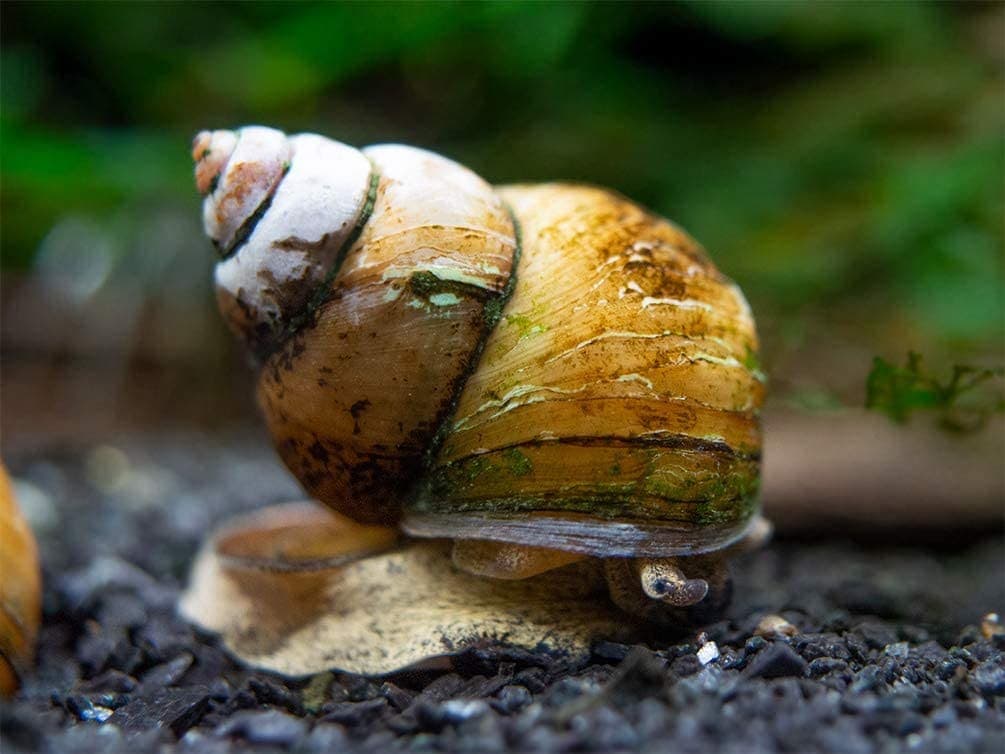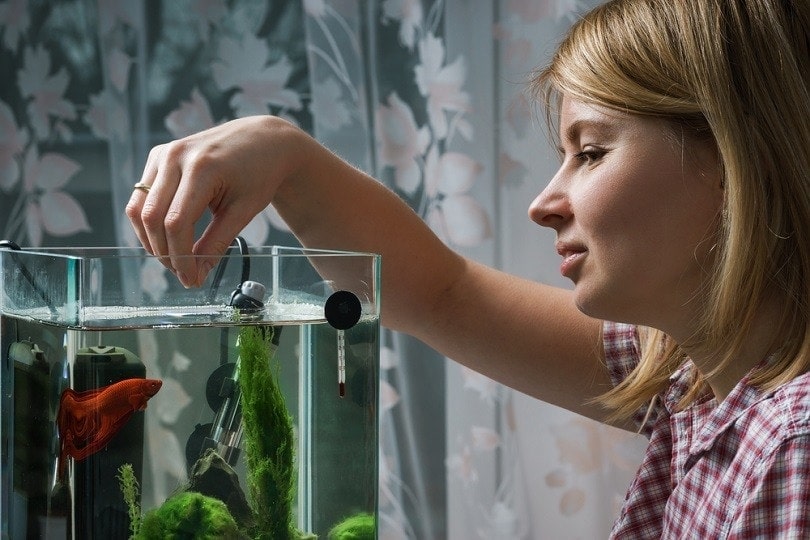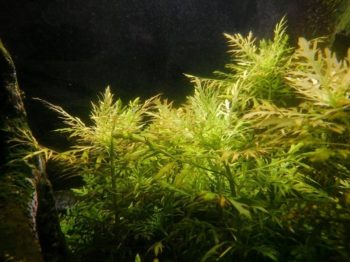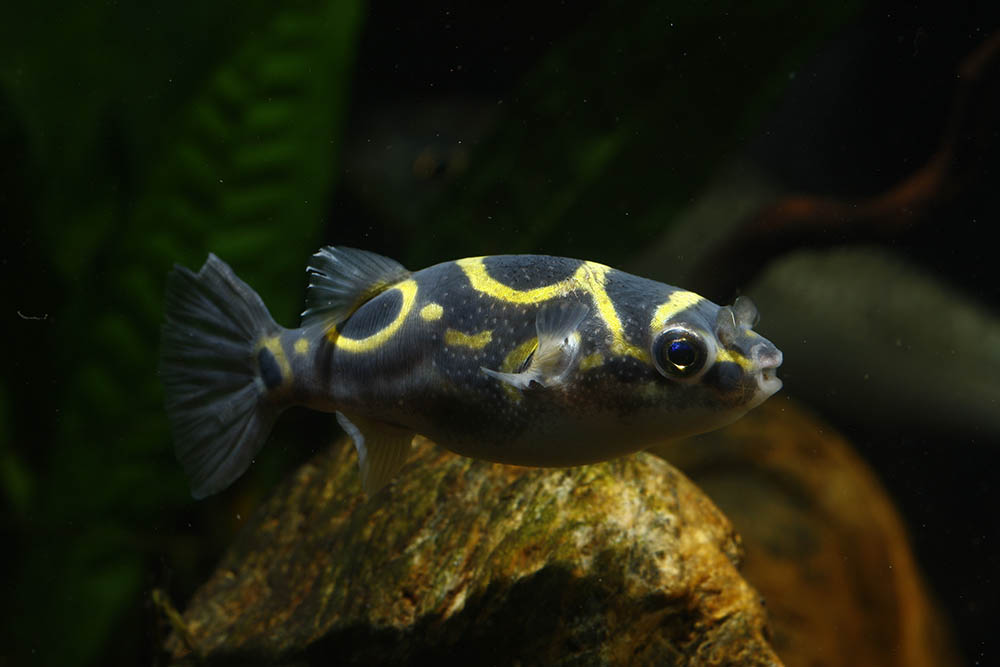Japanese Trapdoor Snail: Care, Size, Diet, Breeding & More
Updated on

Before purchasing animals for any aquarium, it’s best to make sure they get along well with the ones you already have. The Japanese Trapdoor Snail is a great choice for freshwater aquariums since they’re colorful, non-aggressive, and eat algae, so they keep your tank cleaner. The peaceful creatures eat all sorts of dead material, including uneaten fish food and plants.
If you want a peaceful creature for your aquarium that gets along with everyone and keeps your tank clean, the Japanese Trapdoor Snail is a fantastic choice. Discover how much they cost, what they need to thrive, and if adding some to your tank is a good idea. (Hint: it is!)
Quick Facts about the Japanese Trapdoor Snail
| Species Name: | Cipangopaludina japonica |
| Family: | Viviparidae |
| Care Level: | Low |
| Temperature: | 68–85°F |
| Temperament: | Docile |
| Color Form: | Brown, green, gold, tan |
| Lifespan: | 6–10 years |
| Size: | 1–2.5 inches |
| Diet: | Omnivore |
| Minimum Tank Size: | 10 gallons |
| Tank Set-Up: | Freshwater with plants |
| Compatibility: | Compatible with all aquarium species |

Japanese Trapdoor Snail Overview
As the name suggests, the Japanese Trapdoor snail is originally from Japan, where it lives in freshwater lakes, rivers, streams, and other bodies of water. Japanese Trapdoor snails made their way to the United States in the early 1940s when they were imported as food for river catfish, but they have since become an invasive species in several states.
In an aquarium, Japanese Trapdoor snails are far from invasive and great tank mates to nearly all aquarium species. They will spend hours scouring the bottom of your tank looking for decomposing food, plants, and algae. They have an attractive shape and coloring that add flair to any fish tank.
You may read that, in the wild, Japanese Trapdoor snails carry parasites and that some of them can be problematic for humans. The good news is that there’s absolutely no evidence that Japanese Trapdoor snails being sold for aquariums have this issue, and you can buy them for your tank with confidence.
How Much Do Japanese Trapdoor Snails Cost?
You’re not going to break the bank buying Japanese Trapdoor snails since they’re affordable, but finding them in your local pet shop might not be as easy as it sounds. You can expect to pay $3 to $15 per snail depending on factors like size, availability, and the overall quality and health of the snails. However, if you need to purchase your Japanese Trapdoor snails online and have them shipped to your home, you can expect to pay between $25 and $35 each.
Typical Behavior & Temperament
The best way to describe Japanese Trapdoor snails is that they’re 100% harmless and docile. They pose no risk to any other aquarium animals, but they will eat live plants if they don’t have food. You’ll usually find Japanese Trapdoor snails on the bottom or sides of your tank, where they stay for hours or even days at a time.
Appearance & Varieties
While all Japanese Trapdoor snails have the ubiquitous spiral shell with a point on one end, all of them are uniquely colored, and their exact size and shape can vary significantly.
Like many snail species, the Japanese Trapdoor snail has a tough, shell-like surface called an operculum at the bottom of their body. The operculum acts like a tough exterior door. When the Japanese Trapdoor snail is frightened or wants to sleep, it closes its operculum and blocks out the outside world for safety and peace.
As far as coloring is concerned, the Japanese Trapdoor Snail comes in several earthy colors like tan, brownish-gold, green, reddish-brown, and gray, and it usually has a combination of several colors. Some also have stripes in different colors, while others don’t, but all have long tentacles that stick out like tongues when searching for food.
How to Take Care of Japanese Trapdoor Snails
Habitat, Tank Conditions & Setup
Japanese Trapdoor snails will thrive in most freshwater aquariums that have plants and other animals already living there. However, one thing to watch for is the change from your snail’s old environment to its new one. A significant difference in temperature, cleanliness, and other factors can cause sudden death for your new snails, which is why drip acclimation in your tank is recommended.
Tank Size
Aquarists recommend at least a 10-gallon tank for a Japanese Trapdoor snail because it can become quite large and overwhelm a smaller tank. However, with a good filtration system and a single Japanese Trapdoor snail, a 5-gallon tank might be sufficient.
Water Quality & Conditions
As you might imagine, water quality is critical to your Japanese Trapdoor Snail’s life. Regarding the pH level, the snails can take it a bit lower than many other species, between 6.5 to 8.0. The water temperature should be between 68° and 85° F, which is typical for most aquariums. You should also check for nitrite and ammonia levels since they can be problematic for Japanese Trapdoor snails.
Substrate
You’ll want a fine substrate like sand for your Japanese Trapdoor snails because it helps them eat leftover food and other edible material before it settles into the holes and crevices in larger substrates and rots.
Plants
The type of plants in your aquarium doesn’t make much difference to a Japanese Trapdoor Snail since they typically don’t eat live plants. However, plants with stronger, thicker leaves are best so that, if it wants to, your snail can climb them. Generally, the Japanese Trapdoor snail will stick to plants with softer leaves that are easier to eat.
Lighting
There are no lighting requirements per se for the Japanese Trapdoor Snail. As long as they get regular light every day, the source doesn’t matter. If you want parameters, whatever lighting needs your other fish or plants have, use those for your Japanese Trapdoor Snail. You can skip lighting altogether if it’s just your pet snail in the tank.
Filtration
The best filter system for any tank with a Japanese Trapdoor Snail is rated for the particular tank’s size. In other words, a 10-gallon tank needs a filter made for 10-gallon tanks, as does a 20, 40, 80, or 200-gallon tank. If the filter can keep up with all the animals (and their waste) and keep your aquarium water clean, your Japanese Trapdoor snail will be fine.
Are Japanese Trapdoor Snails Good Tank Mates?
What’s interesting about Japanese Trapdoor snails is that they are peaceful yet slow-moving. That makes them a friend to other animals in your tank, but some species might consider your snail food. Cichlid species will eat Japanese Trapdoor snails, and Koi fish will eat them too, but only the ones that can fit in their mouths. A Japanese Trapdoor snail will only eat another marine creature in your aquarium if it is already deceased.
What to Feed Your Japanese Trapdoor Snail
The Japanese Trapdoor Snail is an omnivore and will eat whatever organic matter it can find, whether plant or animal. They will also eat algae, which keeps your aquarium clean. Breeders recommend supplementing your Japanese Trapdoor snail’s diet with plant pellets and fresh vegetables like cucumbers, kale, lettuce, and zucchini.
You should remove any leftover food from your tank within a day to prevent overwhelming your tank’s filtration system. The occasional bloodworm is also an excellent snack for Japanese Trapdoor snails that adds much-needed protein to their diet.
Keeping Your Japanese Trapdoor Snail Healthy
The easiest way to keep your Japanese Trapdoor Snail healthy is to care for your aquarium and its water. A clean aquarium with clean water is all a Japanese Trapdoor Snail needs to stay healthy and happy (along with adequate food, of course).
Breeding
Japanese Trapdoor snails are viviparous. That means a female gives birth to baby snails ready to survive in your tank from day 1. To breed Japanese Trapdoor snails, you need a male and a female that are at least 1 year old. It’s also worth noting that since they reproduce very slowly, there’s little chance that Japanese Trapdoor snails will overbreed and take over your aquarium.
 Are Japanese Trapdoor Snails Suitable for Your Aquarium?
Are Japanese Trapdoor Snails Suitable for Your Aquarium?
If you have a freshwater aquarium and want to keep it clean while adding an attractive and docile animal, the Japanese Trapdoor snail is a great choice. They get along with all freshwater creatures, eat dead material, and reproduce slowly, so there’s no risk that they overwhelm your aquarium or stress out your other animals.
Japanese Trapdoor snails also love to eat algae and will eat it off almost any surface, keeping your aquarium looking clean and pristine. In other words, these snails are suitable for practically any aquarium and will be an excellent addition to yours.
Read Also:
- Zebra Nerite Snail: Feeding, Care & Breeding Information
- Ramshorn Snail: Care, Colors & Info (+ Why You Need Them)
Featured











